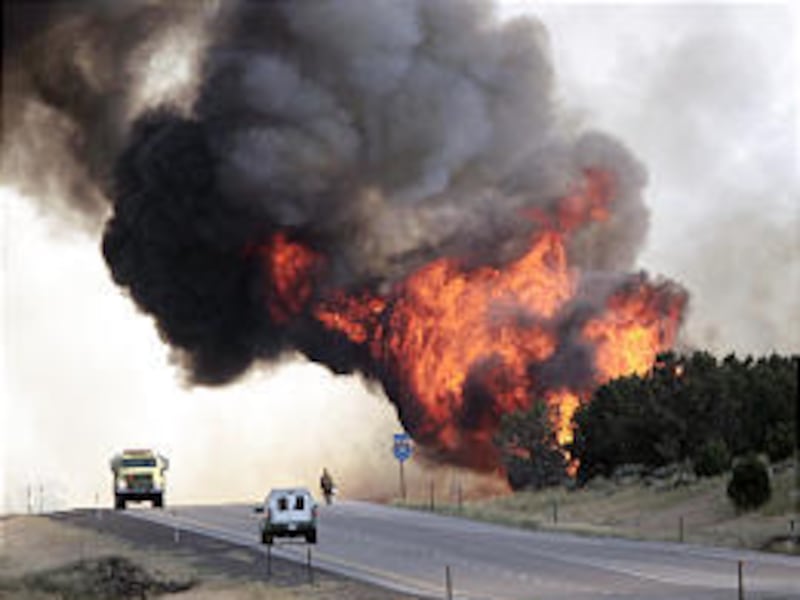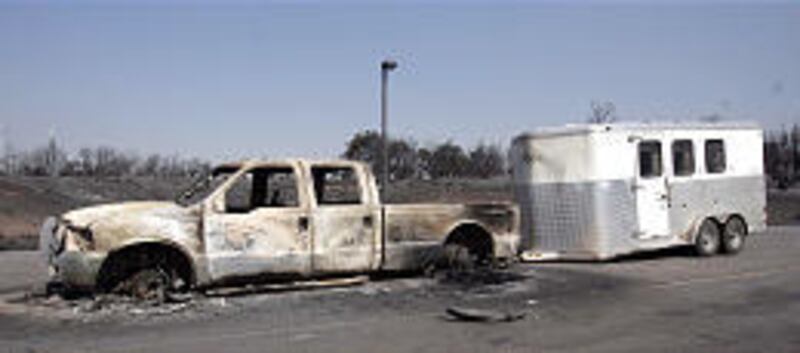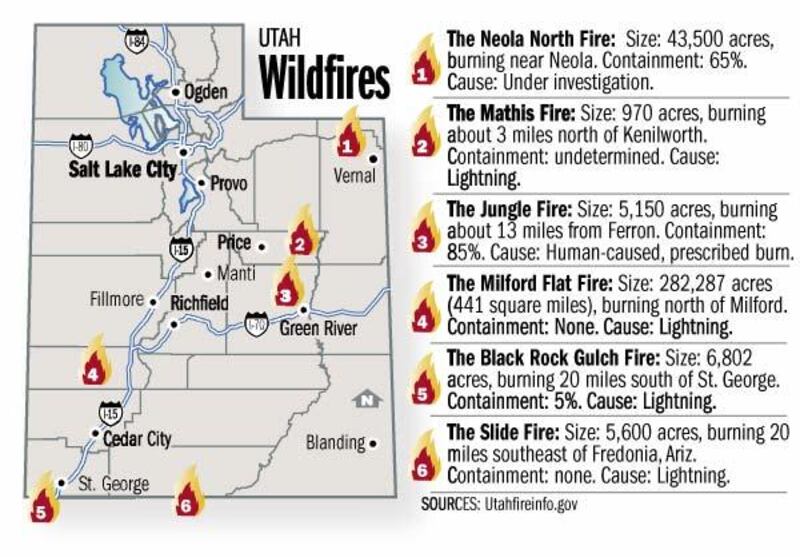BEAVER — The Milford Flat Fire, just three days old, has burned 282,287 acres in southern Utah — likely the largest blaze in state history.
That's 441 square miles: more than half the area of Salt Lake County, which counts 771 square miles.
But only 109 personnel — many local volunteer firefighters — on Sunday night were battling the blaze that has swept over mountains and valleys in Beaver and Millard counties.
"That's not enough," said Jim Springer, spokesman for the Division of Forestry, Fire and State Lands. "There are other (firefighters) on order. A lot of the resources with the fire are stretched thin. For instance, the Neola fire has something like 850 firefighters on it. It's a matter of finding enough resources."
About 40 evacuees from Cove Fort, Millard County, returned to their homes — or, for Allen Carey, what was left of his home — Sunday. Some blame federal government grazing policies for contributing to the blaze.
At 6 a.m. today, local firefighters may get a reprieve, as a Type I incident management team is expected to take control of fire fighting.
Members of Type I teams have experience fighting complex fires and could be accompanied by air support, said Susan Marzec, a fire information officer for the Bureau of Land Management.
Two helicopters have been dropping water over the blaze and two single-engine air tankers were spreading fire retardant.
The Federal Emergency Management Agency has given the state a grant to cover 75 percent of the state's firefighting tab, FEMA spokesman Derek Jensen said. Costs have yet to be tallied.
"When they get into 10,000, 20,000, 30,000 acres, we consider it a big fire," said Springer. "This is a monster. The biggest fire we've had in the state if my memory serves me correct is 95,000 acres."
No portion of the fire is contained.
Carey, who has lived in Cove Fort for eight years, lost about $200,000 after the fire consumed his mobile home, sheds, barn and camper. He had been starting an organic farm.
He returned to find the ruins of his 27 acres about 6 p.m. Saturday after a quick trip to Salt Lake City.
"I knew there was smoke way out in the west desert when I left at 8 a.m. but I didn't realize it would come out here," he said. "When I returned, the roads were all blocked off and I couldn't get back in."
Carey was tired Sunday, but he plans to rebuild: "I've always liked the desert. I was raised in the desert and I like it. It's a good place."
Cove Fort resident Pete Vander Meide was napping Saturday afternoon as flames marched toward his house. Wind startled him awake.
He opened his eyes to discover it was pitch black outside. He grabbed his passport, a travel bag and some books, and tore off in his car.
A wall of flames engulfed the end of his long, winding driveway. He sped through and survived.
The fire also spared Vander Meide's house, stopping at a ditch 150 feet away.
"I know it was the Lord that saved this place," he said.
Alan Peacock never left his goat ranch in Cove Fort. The family that normally runs the volunteer fire station was on vacation, so Peacock, a retired police officer for Modesto city and San Louis Obispo County in California, started up the truck and helped neighbors.
Peacock also described the airplane, a bomber, that swung low, so low it looked like it was going to crash into his house, but at the last minute released red retardant on his roof, which dripped onto his house, yard and Great Pyrenees dogs.
Peacock is frustrated with the BLM's prohibition of grazing on federal lands charred by fire last year in the area. The policy is to help vegetation regrow.
"I understand," Peacock said. "But you have sections 480 acres this way and 480 acres that way (that didn't get burned). So when you pull animals off that, you have the fire hazard" from a year's growth.
Peacock described cheat grass in the mountains above his home that stood up to his knees. He traveled to the Fillmore BLM office in March and unsuccessfully argued for permission to let his goats eat the grass.
"Poor fire management is the best way for me to describe it," Peacock said.
But Marzec from the BLM said that isn't necessarily true.
"The conditions are more than grasses," Marzec said. "It's real hard to say one thing or another (contributed) to it."
Carey, who lost his farm, said he agrees with Peacock's theory, although he doesn't hold grudges.
Since Saturday afternoon, portions of I-15 have been closed and reopened twice after flames twice jumped across the freeway. The Utah Highway Patrol hoped Sunday's 7:30 p.m. reopening would remain permanent.
Firefighters have ignited "backburns to keep the fire controlled on the west side of the freeway," UHP Lt. Steve Winward said. "Most of the big towns are on the east side of the freeway, so they're hoping to keep it on the west side."
E-mail: lhancock@desnews.com









